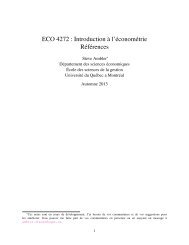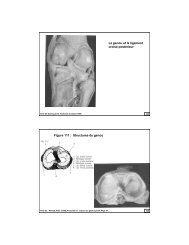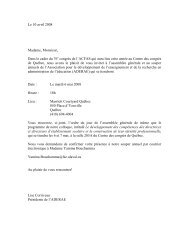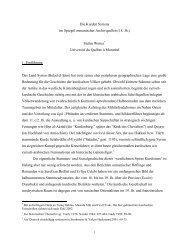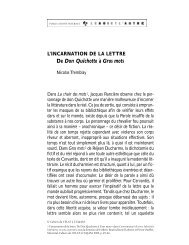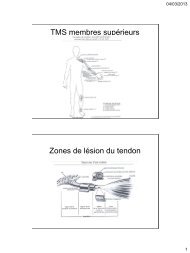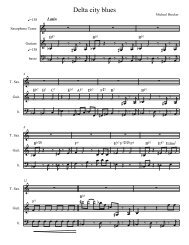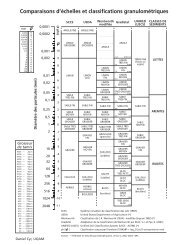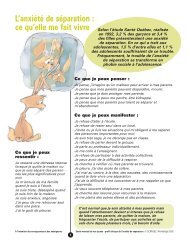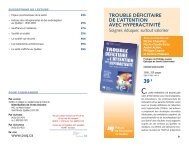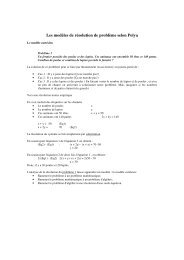Naive, Biased, yet Bayesian: Can Juries Interpret Selectively ...
Naive, Biased, yet Bayesian: Can Juries Interpret Selectively ...
Naive, Biased, yet Bayesian: Can Juries Interpret Selectively ...
Create successful ePaper yourself
Turn your PDF publications into a flip-book with our unique Google optimized e-Paper software.
<strong>Can</strong> <strong>Juries</strong> <strong>Interpret</strong> Setecttajry Produced Evidence? 267<br />
production, and therefore flips more in equilibrium. The equal marginal costs<br />
of flipping, as opposed to the unequal costs of evidence production, can be<br />
justified by assuming a competitive market for expert coin-flippers. An expert<br />
charging a supracompetitive rate would not attract any clients.<br />
To illustrate the equilibrium, we present a numerical example. Suppose that<br />
the true p equals |, so that the plaintiff is favored by the distribution, and the<br />
jury has a uniform prior over the unknown p, that is, [a = 1, b — 1}. Suppose<br />
further that the amount at risk is $2,000,000, and the cost of flipping is $ 100,000.<br />
In equilibrium the plaintiff reports 1.96 heads, and the defendant reports 0.48<br />
tails. On average, the plaintiff will take 2.94 flips, costing $294,000, and<br />
the defendant 1.44 flips, costing $144,000. The jury's estimate of p is exact:<br />
(1 + 1.96)/(2 + 1.96 + 0.48) = .667.<br />
When p is close to zero, or one, the marginal benefit of flipping is so small<br />
that the party favored by the distribution takes no flips. In this case, the Nash<br />
equilibrium takes the following form, depending upon who decides not to flip:<br />
{//'*, T**) = {-a-b + (l/c)(-ac(l - p)) l/2 ,0) if 7"* < 0 (4b)<br />
= {0, -a - b + (\/c)(bcpS) l/2 } if H* < O.(4c)<br />
The stronger the beliefs of the jury—that is, the larger are {a, b]—the fewer flips<br />
the respective parties take. A party produces no evidence when the bias of the<br />
jury is strong, and when p is near zero or one. In this case the marginal benefit<br />
of flipping is so small, that it is better to not flip at all. When this happens,<br />
the opposing litigant decides to flip more because the reaction functions of the<br />
litigants are upward sloping. The net effect of these changes is to bias the<br />
estimator of the jury toward the prior mean of the jury. Note that although<br />
the estimator is biased, it represents a improvement relative to the no-evidence<br />
case, because it moves the jury's estimator from the prior mean toward the<br />
true p.<br />
The Nash equilibrium is illustrated for all possible p values in three different<br />
cases for S = $2,000,000 and c = $100,000: in Figure 1, [a = 1, b = 1);<br />
Figure 2, {a = 2, b = 1}; and Figure 3, {a = 0, b = 0}. In all three figures,<br />
the true value of p is on the horizontal axis; the top graph plots the number of<br />
heads and tails reported by the litigants; and the bottom graph plots the value<br />
of the jury's estimator relative to the true value of p. In Figure 1, the jury has a<br />
uniform prior over the unknown value of p. In the top graph of Figure 1, when<br />
the value of p is near zero, only the plaintiff flips, and the jury's estimator of<br />
p is biased toward the prior mean. The jury's prior is represented by a dashed<br />
horizontal line. The bias is represented in the bottom graph as a deviation from<br />
the 45 degree line. As p increases, when the defendant begins flipping, the<br />
jury's estimator becomes exact—that is, p* — H*/(H* + T*) = p. As p<br />
approaches one, the plaintiff stops flipping, and the jury's estimator is again<br />
biased toward the prior mean.<br />
The effects of jury bias are illustrated in Figure 2, where the jury's prior



